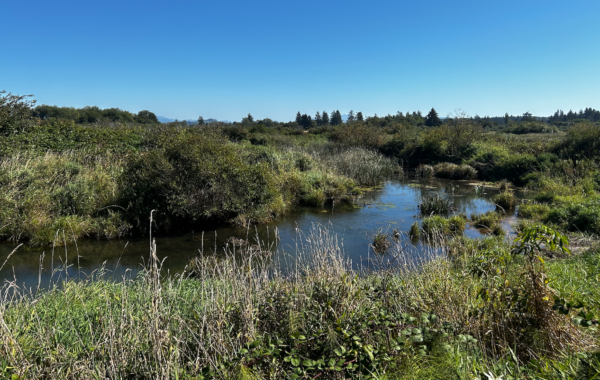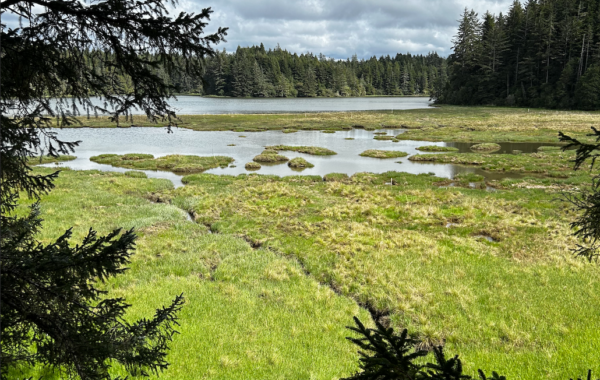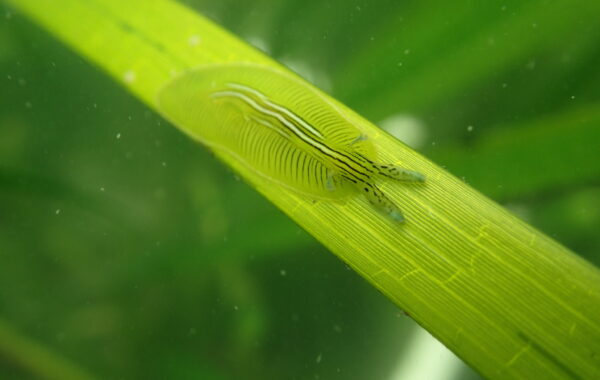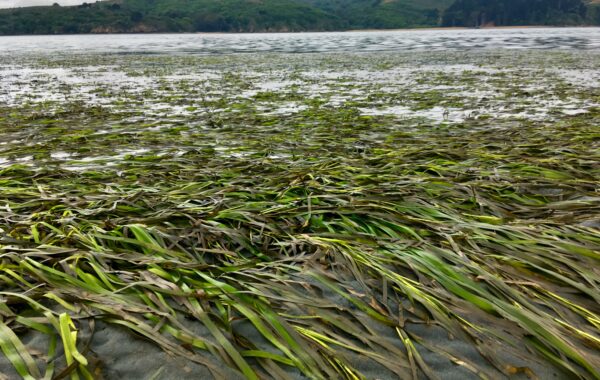Climate Resilience
Oregon Shores is working to advance Natural Climate Solutions by promoting the conservation, responsible management, and restoration of our coastal vegetative habitats.
Achieving Balance
Natural Climate Solutions (NCS) are actions that manage the natural environment in a manner that promotes carbon drawdown. The most important of these actions is the protection of vegetative habitats, which sequester enormous amounts of carbon. Progressing NCS across the coast has the potential to build social and ecological resilience to climate change and also offers many co-benefits to support biodiversity, enhance water quality, control erosion, and support livelihoods in fisheries and tourism.
We aim to increase support for these holistic solutions and implement them in estuary management and resilience planning.

Blue Carbon
Coastal marine ecosystems, particularly estuaries, are responsible for capturing and storing enormous amounts of carbon (termed “blue carbon”).
NOAA estimates that coastal wetland ecosystems, including salt marshes and seagrass meadows, sequester carbon at a rate ten times greater than mature tropical forests. However, approximately 85% of tidal wetlands have been lost from West Coast estuaries to create room for agriculture and development. Investing and enhancing blue carbon sequestration by protecting and restoring estuarine wetlands is increasingly recognized worldwide as an essential natural climate solution. Oregon Shores advocates for greater protection of blue carbon habitat in Estuary Management Plans through our Campaign for Oregon’s Estuaries.

Habitat Highlight
Essential Eelgrass
We work to protect a wide range of coastal habitats, from watersheds to offshore reefs. But no resource we work on is more important than the state’s estuaries. A critical blue carbon habitat within estuarine ecosystems is eelgrass, a species of seagrass native to the West coast. Eelgrass meadows play an essential role in mitigating climate change because they sequester and store atmospheric carbon in their roots. Meadows also act as coastal filters, capturing organic material from the water and storing it in the sediment, which allows for even more carbon storage. Additionally, the photosynthesis of eelgrass locally buffers the impacts of ocean acidification, providing sensitive species refuge from acidic conditions. Eelgrass also stabilizes sediment and buffers storm surges, offering protection from coastal hazards.
Protecting eelgrass is not only a climate solution, but it provides extraordinary benefits to fish, wildlife, and people. Eelgrass is considered “essential fish habitat” by NOAA, because many commercially important and endangered fish species utilize eelgrass meadows in various stages of their life history. Meadows are like coral reefs of the West Coast, supporting biodiversity and entire food webs.
Oregon Shores is committed to preserving the remaining eelgrass habitat in our estuaries and encouraging efforts to restore it.

With support from Pew Charitable Trusts, the City of Coos Bay, and Crag Law Center, we developed a “primer” on eelgrass as a guide for concerned citizens to help protect this essential resource.
Oregon Shores works with our members, partners, and activists to ensure that eelgrass and other essential estuarine habitats are better protected across the coast through amended Estuary Management Plans and to advocate for the restoration of eelgrass habitat where it has diminished. We also serve on the Steering Committee for the Lincoln and Lane County Estuary Resilience Action Plans to inform the planning process and advance natural climate solutions in our estuaries.

Join us in our mission to protect Oregon’s estuaries.
EXPLORE OUR WORK
Our Programs and Campaigns

Campaign for Oregon’s Estuaries
The goal of the Campaign for Oregon’s Estuaries is to build a strong popular movement for conserving our estuarine resources based on a broad public understanding of the importance of these places where rivers meet the sea.
Nearshore Ocean
Oregon Shores is committed to preserving Oregon’s rich and diverse marine environments
Shoreline and Land Management
We employ Oregon’s land use planning and other regulatory laws to achieve maximum protection of our public shoreline and the environment of our coastal region.
